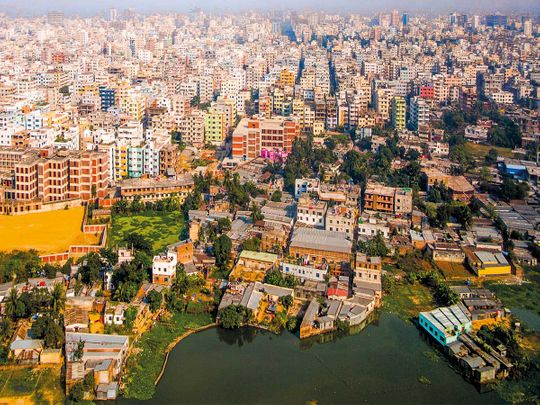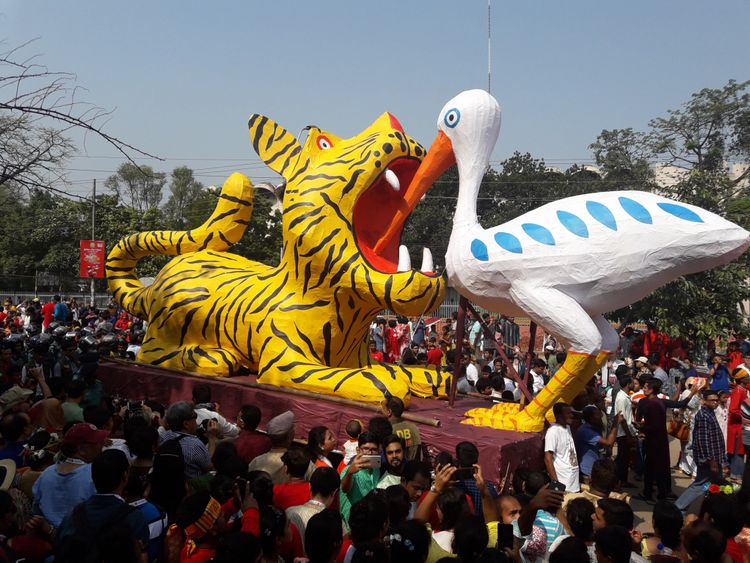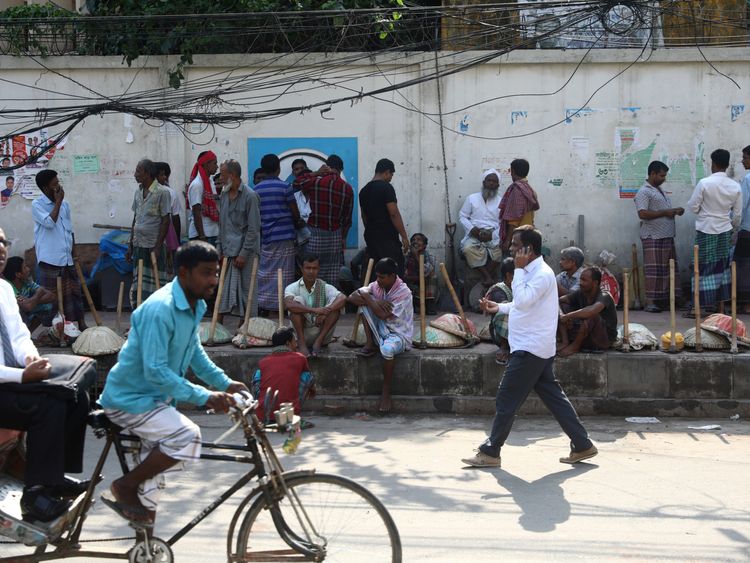
Outside observers often judge Bangladesh harshly. The impression given is of a country that is poor and downtrodden, and reliant on foreign aid for its survival. But one visit to Bangladesh, and you are forced to confront preconceived notions.
Make no mistake, Bangladesh is still very poor. For tens of millions, life is a daily struggle of making ends meet. But there’s another side to this picture; there is an expanding middle class. Last year, the World Bank announced Bangladesh had moved from being a ‘low-income’ to a ‘middle-income’ country. In various districts of the capital, one can see a nod to the two main aspirations of the middle class worldwide: good housing and schooling. High-rise apartment blocks with all amenities have popped up at different locations in and around the city, as have international schools.
Last month, I was part of a big group of journalists, academics and NGO-types invited on a ‘Visit Bangladesh’ tour by the government. The group was genuinely diverse — from a Bengali-speaking professor from Japan to a former election commissioner of Bhutan, and from a journalist from Brazil to a former mayor of The Hague. All seemed to have returned to their homes with a revised view of the country.
Pull of the capital
Branding Dhaka a bustling city would be an understatement of sorts. It’s Mumbai on steroids. The metropolis is positively maddening, a magnet for millions from the rest of Bangladesh who seek their fortunes here. While the traffic is truly horrific, the city’s roadways system is relatively vast. The hundreds of thousands of Japanese-made cars clogging these roads outnumber two-wheelers by a 7:3 (an unscientific calculation on my part), attesting to the buying power of ordinary Bangladeshis. A metro network is under construction, too.
The Greater Dhaka Area is home to more than 18 million people, with at least a million employed in one of the country’s most important sectors: the garment industry.
The economic revival has been quietly and steadily going on for the past decade. In its report last year, the International Monetary Fund noted: “The Bangladesh economy continues to perform well with robust and stable growth. GDP growth has averaged more than six per cent over the last decade, significantly lifting GDP per capita. Thanks to the ready-made garment (RMG) sector, the economy has diversified away from an agrarian to a more manufacturing-based economy, supported by abundant low-cost labour. Poverty has declined steadily and other social indicators have improved.”
Riverine, Muslim-majority Bangladesh is one of the most densely populated countries in the world — according to latest UN estimates, it has a population of 167 million. It is also a country that has seen more than its fair share of cyclones, floods and other natural disasters. Just this month, authorities evacuated 500,000 people from seven coastal districts as Tropical Cyclone Fani hit eastern India.
Mujib’s legacy
Shaikh Mujibur Rahman, father of the current Prime Minister Shaikh Hasina and founder of the Awami League, is a revered father-figure in Bangladesh. The country’s first prime minister, Mujib was central to the Bangladeshi independence cause. However, on August 15, 1975, he was assassinated along with his wife, three sons, two daughters-in-law and about 20 other relatives by disgruntled right-wing army officers. His two daughters, Shaikh Hasina and Shaikh Rehana, survived the coup as they were both visiting West Germany at that time.
The national narrative of Bangladesh, especially when the Awami League has been in power, has held Mujib in great regard, strengthening his position as the father of the nation. However, when Khaleda Zia’s Bangladesh Nationalist Party was at the helm, Mujib’s legacy was downplayed; her husband General Zia-Ur-Rahman was projected as a national leader. Zia was the second most powerful man in the military when Mujib was assassinated, and later took power as the country’s autocratic ruler before he himself was assassinated in 1981 by another group of disgruntled army officers.
The house in central Dhaka where Mujib was killed has been turned into a museum, with most of the things inside left as they had been on that fateful night.
Rohingya issue
Following the Myanmar regime’s genocide against its Rohingya Muslim minority that left more than 10,000 dead in 2017 alone, the total Rohingya population in Bangladesh has skyrocketed to more than 1.1 million (comprising 222,852 households). This has made the main refugee settlement near Cox Bazar the fifth largest city in the country. The mega camp is divided into 34 units, and managed from a ‘coordination house’ located in Unit 17, run by Bangladesh’s Refugee Relief and Repatriation Commission (RRRC). The commission coordinates the humanitarian response while working with the UNHCR and other international aid agencies.
The scale of the camp is staggering. All the 34 subdivisions together cover an area of 6,200 acres, with about 25,000 to 50,000 people living in each subdivision. While the Rohingyas in Bangladeshi refugee camps face no threats or persecution, they are eking out a grim existence. The hopelessness on the faces of the children is palpable, as is the grinding boredom and monotony of adults. These refugees face a very uncertain future — they can’t leave the camp, and they cannot return home until such time as the regime in Myanmar changes its policies. Which looks very unlikely. But Dhaka’s position on the refugees is clear: it wants them to return home.
“There is no Plan B. The government of Myanmar must take back its people, and must give them citizenship rights and their human rights,” Mohammad Mizanur Rahman, Additional Commissioner of the Refugee Relief and Repatriation Commission told us. “When the Rohingyas first arrived [in the latest exodus after August 25, 2017], local people were the first responders. But gradually, hospitality turned to hostility in some cases. They feel the world is only concerned about the Rohingyas. There has been a big demographic change in the area. Also, this area used to be an elephant sanctuary. In all, 14 Rohingyas were trampled to death by elephants.”















